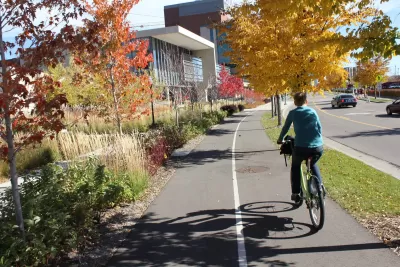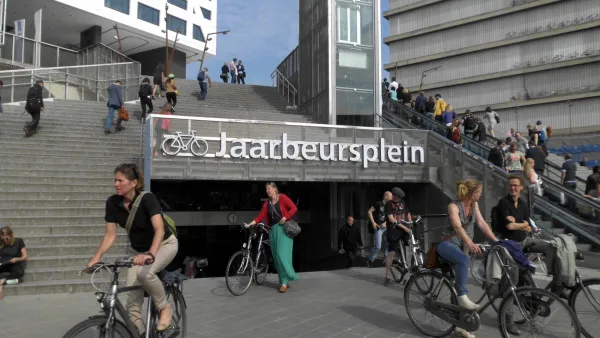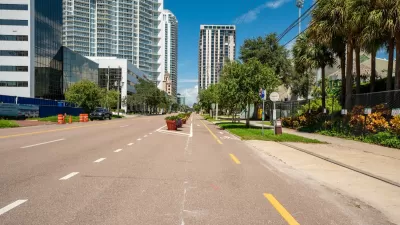Twice as many men as women commute by bike in Minneapolis-St. Paul, and the likely reasons are varied.

Greta Kaul writes that data shows the Twin Cities has one of the highest levels of bike commuting in the country, but it also has a gender gap in cycling. "In the Minneapolis-St. Paul metro area, men who work were twice as likely to commute via bike as women who work, at 1.2 percent, compared to 0.6 percent."
While this gap is smaller than it is in most other U.S. cities, men still commute by bike more than women generally. The reasons for this difference include women’s concerns about safety, the perceived need to be "put together" at work, and the greater responsibility put on women to transport children.
While Minneapolis-St. Paul is relatively bike-friendly, the gender gap suggests that changes still need to be made to bring more women into cycling. Kaul notes that safer streets would encourage women to bike as well bike shops that make biking accessible to women and other underrepresented groups. "The gender gap isn’t the only gap activists are working to close in biking in Minnesota, said [Linnea] House, of Move Minnesota. There are also gaps for people of color and seniors, she said."

Maui's Vacation Rental Debate Turns Ugly
Verbal attacks, misinformation campaigns and fistfights plague a high-stakes debate to convert thousands of vacation rentals into long-term housing.

Planetizen Federal Action Tracker
A weekly monitor of how Trump’s orders and actions are impacting planners and planning in America.

In Urban Planning, AI Prompting Could be the New Design Thinking
Creativity has long been key to great urban design. What if we see AI as our new creative partner?

King County Supportive Housing Program Offers Hope for Unhoused Residents
The county is taking a ‘Housing First’ approach that prioritizes getting people into housing, then offering wraparound supportive services.

Researchers Use AI to Get Clearer Picture of US Housing
Analysts are using artificial intelligence to supercharge their research by allowing them to comb through data faster. Though these AI tools can be error prone, they save time and housing researchers are optimistic about the future.

Making Shared Micromobility More Inclusive
Cities and shared mobility system operators can do more to include people with disabilities in planning and operations, per a new report.
Urban Design for Planners 1: Software Tools
This six-course series explores essential urban design concepts using open source software and equips planners with the tools they need to participate fully in the urban design process.
Planning for Universal Design
Learn the tools for implementing Universal Design in planning regulations.
planning NEXT
Appalachian Highlands Housing Partners
Mpact (founded as Rail~Volution)
City of Camden Redevelopment Agency
City of Astoria
City of Portland
City of Laramie





























